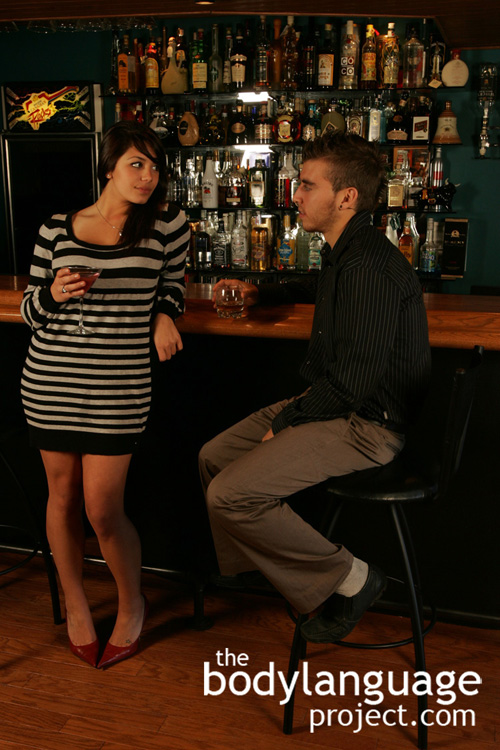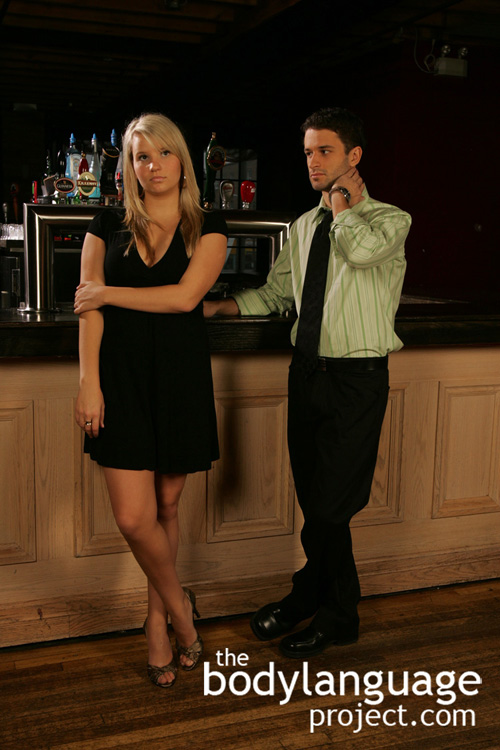
Pigeon toes or ‘tibial torsion’ is a submissive posture because it forces the body into taking on a smaller form.
Another word for “tibial torsion” which is the anatomical term, and one we are more familiar with, is “pigeon toes”. “Pigeon toes” refers to aiming the toes and feet inward at a slight angle reducing their outward profile. The opposite of this posture is toes outward called “splay footed” or “duck footed” which is a military type posture and a signal of dominance, but only relatively speaking. Meaning that any body movement that is meant to, or leads to, the shrinking of the body’s profile where less space is taken up is a submissive cue and where more space is taken up is a dominant cue. So relative to having the toes pointing directly forward, which has no meaning, the toes pointing inward and outward, mean submissiveness and dominance respectively. Women in courtships displays, as we initially outlined, take up submissive displays to attract the attention of men. I have classified this in the same department as shoulder shrugs because they are very similar, perhaps not in their appearance, but in their effect. With all submission signals, the net effect is to create a less threatening profile and to appear more childlike.
Interestingly “tibial torsion” is also a childhood condition where there is actual anatomical inward twisting of the shin bones located between the knee and the ankle causing the feet to turn inward. This condition arises due to the position of the baby in uterus, but is not at all what we are referring to with respect to hidden sexual body language. Tibial torsion in a dating context, performed by women who have no underlying anatomical deformities happens for the purpose of making the body appear smaller and more submissive, rather than due to a medical condition. Medical deformities can also apply to the toes as they point outward or duck footed too, and so are not always indicators of dominance per se.
The shoulder shrug is another childlike posture and happens when a woman let’s her guard down. It is often subtle and occurs subconsciously as a small raise of the shoulders and sometimes is accompanied by an eyebrow flash. Other times it is more pronounced and the head lowers or bows in unison with the shrug and is held for some time. Some other related cues of interest include shoulders up, shoulders flexed or shoulders back to flex out the breasts. The head tilted at forty-five degrees, as we have seen in a previous chapter, shows interest in what is being said, but as it relates to courtship also shows sexual interest. In fact the head turned at forty-five degrees is one of the most universally recognized courtship signals especially if it is accompanied with a headbow and eyes cast upwards making batty eye contact.
One last cue, and one that is especially potent, is looking over a raised shoulder. Women do this flirty gesture as they gaze at men of interest. Instead of squaring themselves off and looking straight into his eyes, her body faces away and she looks over the shoulder which seductively teases him. This posture emphasizes the curviness of the shoulder and exposes the vulnerable neck. It is particularly alluring when done by women wearing a strapless outfit!








